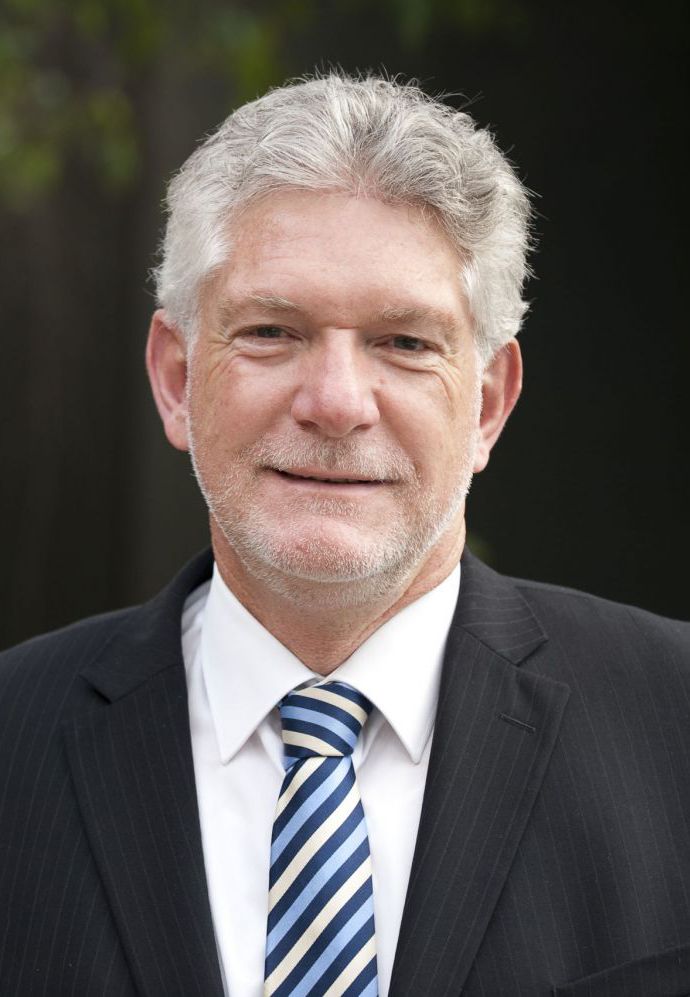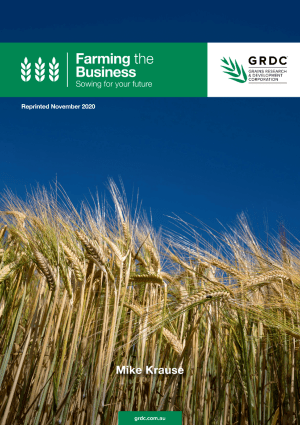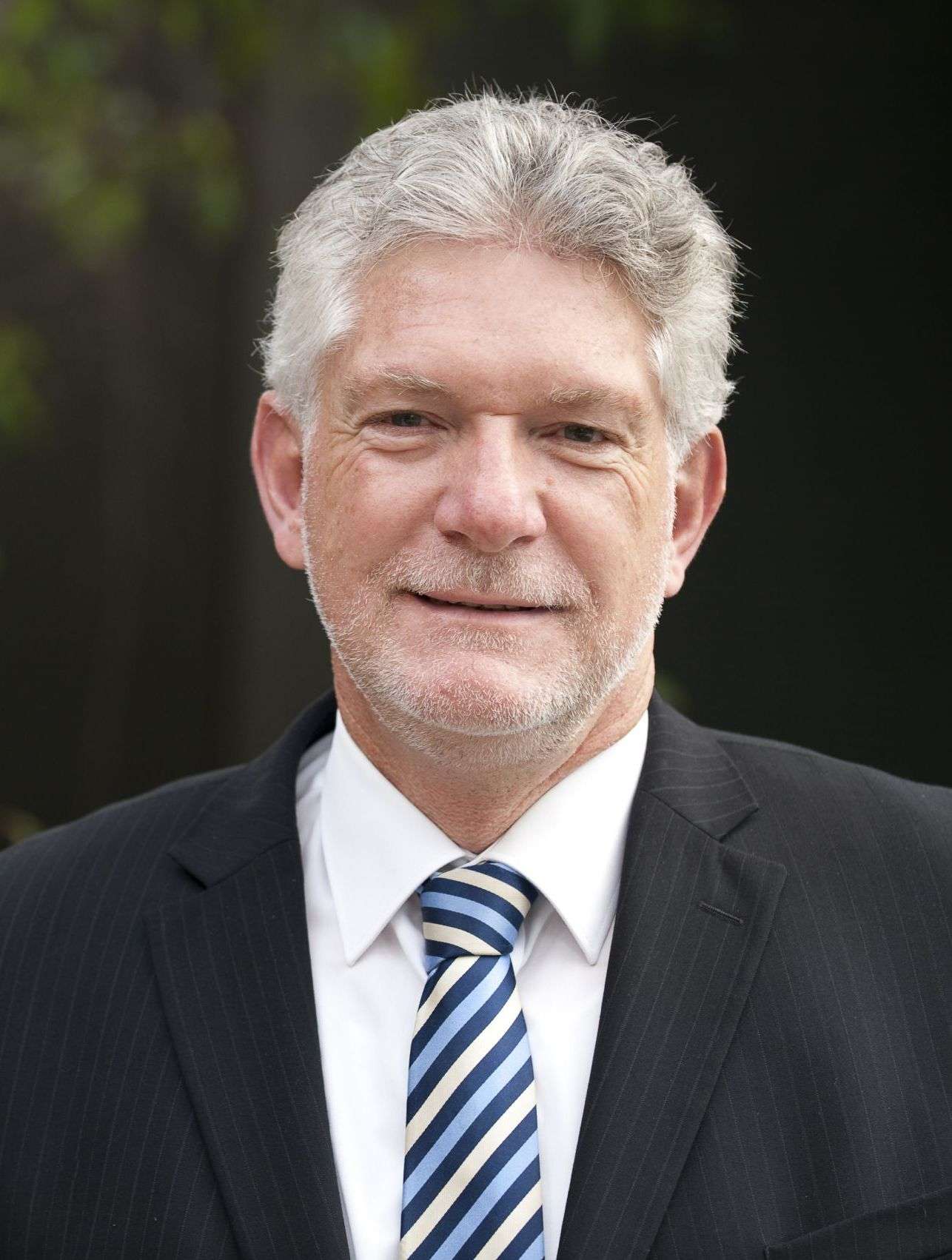
Darryl Gobbet shares his thoughts with Mike Krause on the economic impact of the recent Russian invasion of Ukraine and the latest Omicron pandemic.
These two events will have a significant impact on the Australian economy, and the farm business, through rising commodity prices and farm input costs, and ultimately inflation and the value of the Australian dollar.
Ukraine and Omicron Impact on Farmers
Mike Krause:
Our next guest on Your Farm Business Podcast is Darryl Gobbett. He is currently a visiting fellow at the South Australian Center of Economic Studies at the University of Adelaide. Darryl is also an eminent economist and has had many roles in his successful business career. He is also good at being a very clear communicator when it comes to complex economic situations.
Mike Krause:
Darryl, welcome to Your Farm Business Podcast. We spoke to you about six months ago, and back then the focus was really on recovering out of COVID and what happens in pandemics with interest rates remaining flat for periods of time. But we've had the Ukraine conflict rear its head since that time. Has that meant that we now have a curve ball thrown at us, that things are genuinely changing?
Darryl Gobbett:
I think there's both Ukraine, but there's also Omicron. When we spoke six months ago, the expectation was yep, Delta's with us, the COVID variant. Then Omicron hit us, and it hit Australia probably three or four weeks after it had first been discovered in South Africa. So that had another impact. Particularly here in South Australia, it also had a political impact I think.
Mike Krause:
Yeah, we've had a change of government because of it.
Darryl Gobbett:
I think that's increased the uncertainty, because as we've seen with Omicron, the policy-makers have said, "Well, let's open up." We've opened up and we're now seeing far more cases of Omicron than we ever saw with the previous variants here in Australia, even in Western Australia. We're seeing thousands, probably tens of thousands a day across Australia. So that's had an impact.
Darryl Gobbett:
Then we have Russia invading Ukraine, and again the uncertainty as to how long the Ukrainians could hold out. And it looks as if, with all the uncertainties, they are doing a very, very good job. And there's been a very swift response, a much swifter response, I think, than anyone expected, including Mr. Putin and Mr. Xi, from the West. A response not only economically, financially in terms of the sanctions, and militarily, but also in terms of what looks as if its’s actually bringing the West together, as no one sort of really expected.
Mike Krause:
Right. They've created a bigger alliance against Russia.
Darryl Gobbett:
That's right. And so we've got all these uncertainties. I think the interesting thing for interest rates, I think they are still panning out as I broadly expected. As I said back then, I didn't expect the Reserve Bank to be raising interest rates until probably well into 2023. And they haven't done that with the cash rate - it's sitting at 0.1. We've seen other interest rates, the longer term ones, rise. But even when we look at the 10-year government bond rate in Australia, that's probably gone up about 1% since we spoke last. So it's still at some of the lowest levels that Australia's ever seen, not just since the Second World War, but ever seen.
Mike Krause:
Right.
Darryl Gobbett:
Again, Philip Lowe, the Governor of the Reserve Bank, is now saying, "Well, it's plausible we could have a cash rate rise by the end of 2022." But again, we are seeing quite a different response in Australia than we're seeing in the United States, where they are increasing even before the uncertainties coming out of the Ukraine, we are seeing them on quite an aggressive raising stance. So we could see interest rates in the United States, the cash rate, go up another one or 2% over the next couple of months.
Darryl Gobbett:
Interest rates are rising in Canada, the United Kingdom, New Zealand, whereas in Australia, the official rate I think is going to remain probably not much above the current 0.1% well into 2023. The issue here I think for Australia is the Reserve Bank, I think, has much more focus on getting unemployment down to well ... I think that they're looking at a rate of around about 2% before they think inflation is going to really start to lift.
Mike Krause:
Wow. That's a quite a low rate.
Darryl Gobbett:
Well, it's currently 4% nationally, 5% here in South Australia. But the way, the governor is talking and some of the information he put up at a recent meeting, where the financial review had faxed through to him one of their cover pages from 1960, where the Reserve Bank was concerned that the unemployment rate had risen to 2%. I think that's the mindset in the Reserve Bank that they would be wanting to see inflation in that 2 to 3% band quite sustainably.
Mike Krause:
All right.
Darryl Gobbett:
And they don't see that it's there. One of the reasons they don't see that it's there, even though we had CPI inflation over the year to December of 3.5%, they're saying there's a lot of one-offs, and we are not seeing the rise in wages growth that they would like to see.
Darryl Gobbett:
And so we're actually seeing declining real wages, if we look at inflation of 3.5% or 4%, but wages growth are perhaps no more than one to 2%. I think the Reserve Bank is saying, "We would like to see wages growth stronger. The only way we're going to get stronger wages growth is to have much tighter unemployment, or lower unemployment than what we've currently got.”
Darryl Gobbett:
And I think that's what's really going to be driving their views on interest rates, even as the rest of the world pushes rates up.
Mike Krause:
So as rates go up internationally, there won't be pressure on us to follow?
Darryl Gobbett:
There'll be pressure on the Reserve Bank to follow, and we'll see that amongst the commentators and the analysts. We are seeing a rise in interest rates in those longer term interest rates, such as the three, five, 10-year bond rates and the private swap. We are seeing it in the bill futures rates. In other words, what people could pay for 90 day bills going into 2025, 2026. But they are still only in the order of two to 3%, those long-term bills.
Mike Krause:
Yeah. If we have any rises, we're only talking about a half or 1% at the most maybe.
Darryl Gobbett:
Certainly, I reckon, in the next 12 months to 18 months. Although the expectation I think, particularly for people who are looking to borrow term funds, is that they're going to be paying more. So we'll get back to that situation where the term funds could well be costing more than the overdrafts, the bill finance.
Mike Krause:
Right. Okay.
Darryl Gobbett:
We'll have that, what we call a steep yield curve.
Darryl Gobbett:
We've probably got used to the idea that fixed term rates may well be lower than variable rates. Whereas I think we are going to shift away, partly because of expectations that the Reserve Bank will raise rates in the longer run. But also because of what we're seeing overseas, where those rates are going up, and those rates are going to be going up partly because of the inflation impact from Ukraine. But also because we've seen not only a significant lift in government borrowing because of COVID, the responses to that as governments have tried to keep the economies going.
Darryl Gobbett:
And I think, what the Ukraine-Russian war has brought about, is most of the Western governments are now talking about a significant lift in defense spending, which we fund by debt. Even Germany, where their ratio of defense spending to GDP has normally been about one to 1.2%. At that level, they're not even maintaining their armed services or machinery. They talk about that.
Darryl Gobbett:
They are now talking that they will be putting their defense spending up to around about 2% of GDP. The English, well, the British, are going to increase theirs. The Americans are going to increase theirs. So we've got on top of the COVID induced deficits and higher levels of debt, we are now going to have what is a longer term lift in government spending on defense, on top of all the spending that's going to be on aged care and others because of the demographics in the Western countries. So we are in for a period of significantly higher budget deficits for longer than was expected, and certainly longer than was expected just prior to Christmas, before the Russians invaded the Ukraine.
Darryl Gobbett:
I think that's another thing. And we're seeing that here in Australia, where if we go back about three years, government debt here, the federal government debt, was about $200 million. Well, now it's approaching a billion dollars. It's gone in a huge fashion. And again, the Reserve Bank governor is saying he wants to get the ratio of debt to total output, you'll hear when we talk debt to GDP. He wants to get that done, but he doesn't see that it should come down by the government actually cutting or increasing taxes. He would see the better path to get that done would be having stronger growth.
Mike Krause:
And so the spending and defense will encourage growth to continue?
Darryl Gobbett:
That will encourage growth. I think it does suggest that we're going to see higher debt to output ratios, what the economists have called debt to GDP. We're going to see that's going to be higher than what was expected six months ago, 12 months ago, because we were looking at a path back to surpluses as we came out of COVID.
Darryl Gobbett:
But we are going to see a high level of government debt, certainly at the federal level, and I think we'll also see it at the state level. So we've just got to be aware of that, what we call the long-term structural interest rate are going to be going up, even while the Reserve Bank, I think, will not be moving very quickly on the cash rate. Which again, as I said before, is in contrast to what is happening in the major Western countries overseas.
Mike Krause:
Yeah. Darryl, I just want to change the discussion a little bit to inflation. I know you said that it's within the target range, but recently we've seen fuel prices go up for farmers. We've seen chemical prices go up for farmers. We've seen fertilizer go up for farmers. Do you feel that's a short-term reaction to what's happening with our supply chain and how it's affected by what’s happening in the Ukraine and China's reaction? Or are we going to come back within 12 months to normal levels?
Darryl Gobbett:
I don't believe we're going to be seeing a reduction in things like urea prices, potash prices, fertilizers, chemicals, moving back to what we had back in mid two '21 very quickly, because we just don't know how the supply chain reactions are occurring. They were disrupted during COVID, now the cost of a ... I have own experience with one of the little businesses I run, where the cost of a container to Japan went up from three to $400 to $1,200…if you could get it!
Darryl Gobbett:
And the issue's going to be, with the sanctions that have been put on Russia and to Belarus, and the impacts that the war in the Black Sea is having, because Belarus and Russia are major producers of natural gas, which is a major input into urea and ammonia. So that's impacting the cost of fertilizer two ways, both the cost of doing it, and whether you can get it at all.
Mike Krause:
Yeah, when you can get it.
Darryl Gobbett:
And when you can ship it round. And that's, I think, going to perhaps wake Australians up even more to this idea that perhaps we've got to become a bit less dependent on the rest of the world, including China, particularly Russia and Belarus, for the ammonia and the urea. And then there's also the issue with potash, where Canada's the biggest producer, but Russia, Kazakhstan, Belarus are major producers of this stuff.
Darryl Gobbett:
I don't see that, even if there was to be a relatively rapid conclusion to the war in Ukraine, which I don't think is going to happen, I think that's going to be drawn out for quite a while. But then you'd also say, how quickly would the Americans, the Europeans, want to take off the sanctions? Would you say within two days of Russia saying, "Oh, we're pulling out," you'd reduce the sanctions? I don't think so. It's a bit like dealing with someone who's been a bit naughty in other areas.
Mike Krause:
Like “Kids, there's got to be consequence for your actions!”
Darryl Gobbett:
That's right. And so I think that's an issue we're all going to face. But at the same time, from what I can see and looking at the latest information from the US Department of Agriculture, those cost issues could stay for us for quite a while. But the commodity prices, wheat, coarse grains, could actually stay quite high for quite a while, because even prior to the Russian invasion of the Ukraine, the USDA was forecasting falling stocks of wheat, for example.
Darryl Gobbett:
They were saying the only reason that production was holding up around the world, for drought and other reasons across the world and flooding in China, was that Australia was going to have record production of wheat in '21-'22. And this is flowing I think to these other costs.
Darryl Gobbett:
Coming back to the issue about inflation and commodity prices. You're already seeing discussions in US forums about whether people will be able to apply the same amount of fertilizer they would normally do and what that's going to mean to productivity. Guys are even talking now about what that's going mean to cutaways, for example, as they reduce their fertilizer.
Darryl Gobbett:
I think, given the uncertainties, we're going to have with commodity prices higher for longer, there's going to be also the changes to the way in which stuff is transported around the world. Stuff will move, so we'll get urea from somewhere else and potash from somewhere else, but that means changes in shipping arrangements. It means changes in what ports can be used. I think there's a lot of uncertainty there. From the Reserve Bank's point of view, I think we're all going to be shocked in fact, by what's going to happen to the CPI in the March quarter.
Mike Krause:
Right.
Darryl Gobbett:
Because we've had that huge lift in petrol prices. We have had the floods and other issues in New South Wales, which are pushing up fruit and vegetable prices. We've got continued strong growth in housing prices. So I think there's going to be a number of areas where the Reserve Bank, relative to what it expected, say, in the December quarter, is going to see quite a surge in the CPI, higher than most people expected.
Mike Krause:
Well, I guess, in some regards what you just said there relieves the farmers because they're forking out on high input costs at the moment, with the hope that the commodity prices remain at the end of the year so that they can claw some of that back. So you're saying that that's likely to happen.
Mike Krause:
Just the last thing I wouldn't mind touching on, and I haven't seen a lot of it discussed… is the Australian dollar going to sit roughly where is it a moment? Or are these high interest rates in other economies rather than ours going to mean that the dollar shifts a little?
Darryl Gobbett:
The Australian dollar is fundamentally driven by what happens to commodity prices.
Mike Krause:
Right.
Darryl Gobbett:
My analysis of this going back over the best part of 30 years is, that the Australian ... Bond rates here are driven more by the Australian dollar than the other way around.
Mike Krause:
Right.
Darryl Gobbett:
And when we did Economics 101, it was all about relative rates and relative inflation rates. Well, they're almost irrelevant in the Australian case. It's really what happens to commodity prices. And Australia have actually done very well over the last several weeks. I was looking at the numbers today. If we look back, for example, at the wheat price, it's almost doubled in US dollar terms over the last, say, six months. Crude oil, we were looking at $60 to $80 a barrel 12 months ago. Now it's $114. Coal is a major one. May last year, the coal price had out of Newcastle, thermal coal at $108 US a ton. Now it's $325. It did hit $420. You’ve got the iron ore price back at $142. You’ve got steel prices, not at record levels, but pretty close to it.
Darryl Gobbett:
Now the interesting thing is, a lot of these prices are back, not so much coal, but some of the things like iron ore and steel, are actually even ... Gas prices are back to where they were about 6 or 12 months ago. So we had this dip in prices I think, as COVID took off again in the second half of 2021. Now we've got the supply issues, the logistics issues, all pushing the Australian dollar up as markets have responded. I think there's another interesting issue here, which is about how Australia is seen as being one of those core providers of commodities to the West in years to come.
Mike Krause:
Oh, okay.
Darryl Gobbett:
We can't continue to rely on Russia, or China, for a lot of these major commodities.
Mike Krause:
Puts us in more of an important position.
Darryl Gobbett:
I think it does. And climate change. It's amazing how Australian farmers are continuing to increase productivity while they're being impacted by climate change. Whereas you'd say the United States, productivity has changed because of the drying out of major parts of the Southwest areas. What's going to happen in Europe with climate change?
Darryl Gobbett:
I think Australia, both in terms of how our farmers have reacted, adapted to climate change, and the new strategic positioning militarily. For example, Australia may well be seen as being the place the rest of the world's got to come to for lithium because we don't want to be dependent upon China or Russia for that. Or, if we get this hydrogen economy stuff right, does that mean we become a major producer of urea and ammonia because we can do it cheaply?
Darryl Gobbett:
I don't know, just the sort of stuff that people will be starting to think about by saying, "Well, is Australia the place where we could become a country that we could actually bring more in from, if we don't believe we can rely any more upon China or Russia or other parts of Central Asia, that we could have limited access to because of China and Russia."
Mike Krause:
Darryl, thank you very much. That was really insightful to go through all those issues and the changes that we're going through. Thank you for agreeing to talk to us again. I'd love to have another chat in about six months time…
Darryl Gobbett:
Yeah.
Mike Krause:
... because I'd imagine there'll be something else that's cropped up that starts to inhibit the current situation we're in and change things in the future. So thank you very much, Darryl, appreciate your clear communication and insights into this. Thank you.
Darryl Gobbett:
Thanks, Mike.
Mike Krause:
You've been listening to Darryl Gobbett. And in summary, I think he gave us six points to remember.
Mike Krause:
1. Interest rates might rise by 1% in the medium term, but they'll remain low for the foreseeable future. Long-term interest rates will probably be higher than short-term rates.
2. Inflation is likely to be in the band of two to 3%, which is the RBAs aim, even though the next March quarter we might have a shot with the increased fuel prices.
3. Probably the biggest point, is this uncertainty that's created by COVID and now Ukraine, will be with us for this foreseeable future, regardless of Ukraine, if that issue is solved in the short-term.
4. Because of that uncertainty, our input costs like fertilizer, fuel and chemicals will stay relatively high.
5. This will help maintain high commodity prices like wheat and barley and canola.
6. The Australian dollar will remain strong because that tends to be driven by high commodity prices.
Mike Krause:
If you want to get more insight into interest rates and its impact on rural land values, have a listen to an earlier podcast we did with Darryl. And you can find that and other a podcast we've done at Your Farm Business Podcast at www.p2pagri.com.au.
Mike Krause:
We look forward to having you as guests in our future Your Farm Business Podcast.
Mike Krause is one of Australia’s leading Farm Business Management consultants with significant experience in providing farm business management support, training and consulting to Australia’s agricultural and agri-business industries.

This experience forms the basis of significant developments:
‘Farming the Business’ manual Mike produced for the GRDC.
‘Plan to Profit’, the successful desktop software developed and sold by Mike over 12 years.
P2PAgri, our new online platform for farmers and advisers. Check it out on www.p2pagri.com.au.




Leave A Comment
You must be logged in to post a comment.